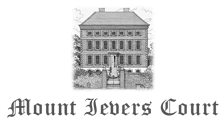The Butlers of Castlecrine
The Ievers family frequently inter-married with the Butlers of Castle Crine. This branch of the ancient Norman family of Butler claim descent from the line of Wild Piers Butler (Piers na mBuile), aka Peter Butler of Grallagh. Born in 1521, Wild Piers was the second son of James, 9th Lord Dunboyne. His grandfather, the 8th Earl of Ormonde, served as Lord Deputy and Lord Treasurer of Ireland during the early years of Henry VIII’s reign.
However, when the King took a fancy to Anne Boleyn – a cousin of the Ormondes – the Earl was obliged to hand the ‘Ormonde’ title over to Anne’s father, Thomas Boleyn. The Earldom of Ormonde was restored to the 8th Earl after Anne’s execution, but the vulnerability of the family to the whims of England’s monarchy was now plain, as Edmund Butler, Prior of Athassel Abbey, discovered when deposed by Thomas Cromwell in 1537 as part of the Reformation.
Wild Piers was just two years old when his father died in 1523, leaving him 16,000 acres of the County Palatine of Co Tipperary. About 100 feet of the wall of his four storey-tower house at Grallagh are apparently still visible today. In 1544, the 23-year-old Butler commanded a company of one hundred men in the army of his uncle (and brother-in-law), the 9th Earl of Ormonde, which served for Henry VIII against the French at the Siege of Boulogne. Two years later, Lord Ormonde and seventeen members of his household died during a deeply suspicious incident of mass poisoning.
In the early 1560s, Piers and his older brother, Lord Dunboyne, had a serious fall out over the Grallagh inheritance. With the support of his cousin, the 10th Earl of Ormonde (known as ‘Black Tom’), Piers resisted Duboyne’s attempts to legally force him to hand over part of his estate. In 1568, Wild Piers repaid Black Tom for his support when he joined his rebellion, known as ‘Butler’s War’, against the scurrilous English adventurer, Sir Peter Carew. In January 1571, the Butlers were granted a general pardon by Queen Elizabeth, daughter of Anne Boleyn and childhood sweetheart of Black Tom Butler. However, Wild Piers’ second son John Butler was killed shortly afterwards while defending Crohane Castle against Lord Dunboyne.
Both Wild Piers and his wife Lady Honora (a daughter of the 10th Earl of Desmond) died in about 1577. Their surviving sons - James, William, Theobald and Richard - all lived in Tipperary.
In 1641 the Irish Catholics rose up and the Confederate Wars commenced, pitting a fragile alliance of Irish and Anglo-Norman Catholic against the forces of English Protestant Republicanism. Head-quartered in Kilkenny, the Confederate forces produced many admirable victories, but were ultimately unable to sustain the pressure.
Following Cromwell's brutal suppressions of the garrisons at Drogheda and Wexford, a treaty was signed at Caher Castle in County Tipperary. The collapse of the Confederacy enabled Cromwell to proceed with the confiscation of all property belonging to Catholics accused of complicity in the "rebellion". These lands were duly granted to soldiers who had fought in his victorious wars against the Royalist forces of King Charles I and the Catholics in Ireland.
Among the leading Confederates was James Butler, great-grandson of Wild Piers, who was based in a castle at Boytonrath, the ruined foundations of which still stand today, just off the day N8 Cashel-Caher road. In 1641, James commanded 400 men in an eleven week siege of Golden Castle beyond Kilfeacle. In 1650, he was captured by Cromwell’s forces in Fethard but released. Captured again at the defence of Limerick in 1652, he was hanged, drawn and quartered and had all his lands forfeited.
His conviction meant the forfeiture of both his life and his estate, but as he was merely a life tenant of Boytonrath, the ownership of this land devolved upon his eldest son Edmond Butler.
As Sir Henry Blackall noted, Edmond was a youth at the outbreak of the rebellion and ‘thus he came within the category of those comparatively “Innocent Papists” who were to be transplanted into Connaught and Clare, there to receive lands equivalent to one-third or two-thirds of their former estate.’As such he was given a Decreee of Innocence and regranted Boytonrath with 577 acres.
Edmond’s brother James took up lands in Clare which had been awarded to the family by the Loughrea Commissioners in 1659 and had a ‘Connaught Certificate’ confirming them in 1677.
Edmond’s youngest brother Thomas was one of the Trustees of the ’49 Officers and he lived at Castle Crine and Drumclogh, Co. Clare. He married Elizabeth, daughter of Sir Philip Percival of Burton, Co. Cork, Feodary of Co. Tipperary and Master of the Court of Wards. Thomas died in 1671, leaving issue the Butlers of Rossroe and Castle Crine.
